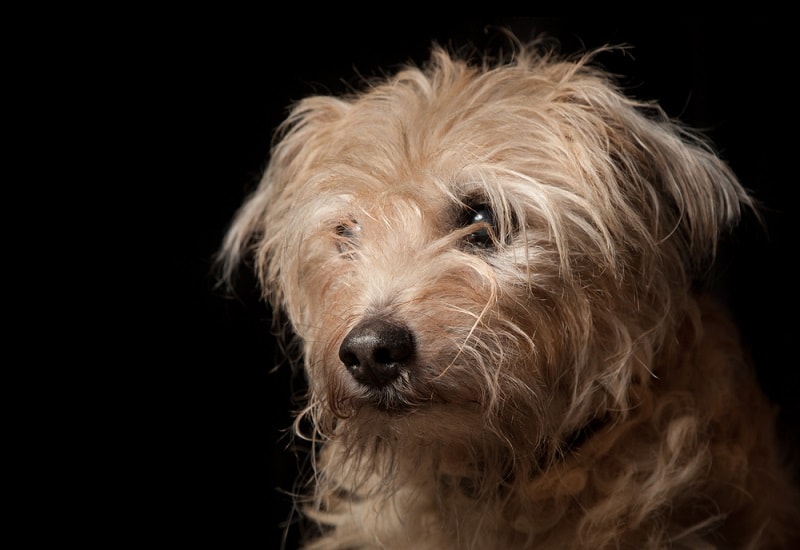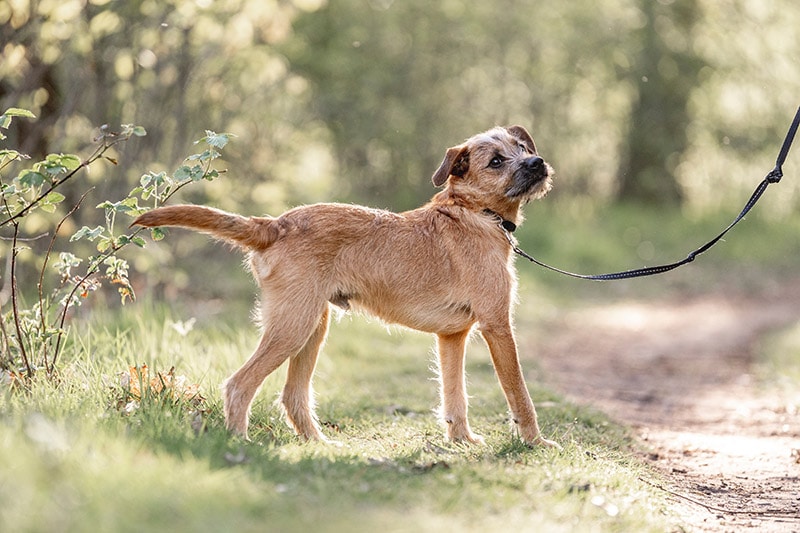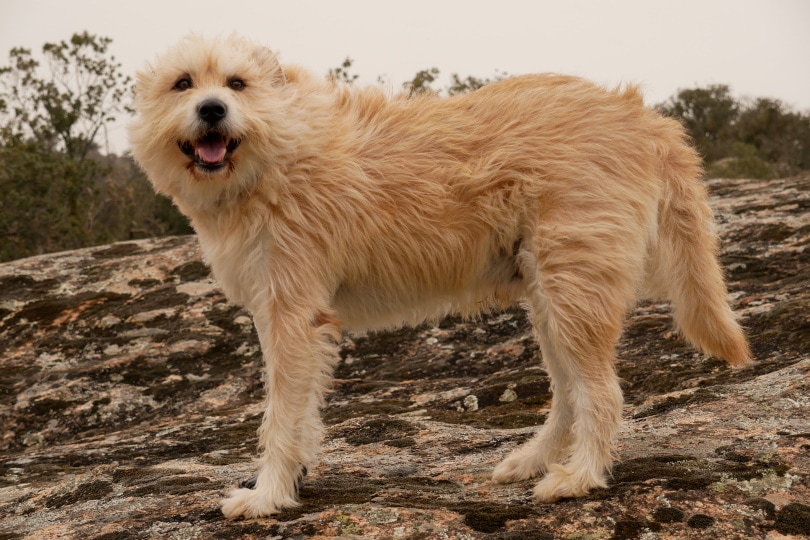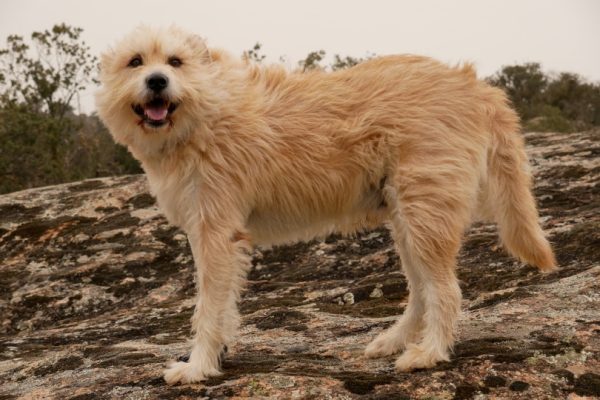Click Below to Skip Ahead
The Dutch Smoushond is a small-sized dog native to the Netherlands. This dog was bred to be a ratter in stables and barns. They are an active and carefree dog that has been around for nearly 200 years. This adorably shaggy breed is well suited for apartment life as long as he is exercised properly. They will develop a close affinity for those they spend a good deal of time with. The Dutch Smoushond is not known to be an anxious breed. They are very easygoing. They get along well with other pets and can make a great addition to an already large family mix.
Breed Overview
Height
14 – 17 inches
Weight
20 – 22 pounds
Lifespan
12 – 15 years
Colors
yellow
Suitable for
Families with children, families with other pets, new pet owners
Temperament
Affectionate, friendly, active
The Dutch Smoushond has a very interesting origin story. The name Smoushod comes from the Jewish word “Smouzen” which means a Jewish male. The wiry coat of the Dutch Smoushond’s coat resembled that of the traditional Jewish male’s beard. These dogs nearly went extinct during World War II when the Nazis invaded the Netherlands in 1940. All dog breeding was stopped during this time. In 1970, a Mrs. Barkman took up the task of reviving the breed. It is not known whether she used any of the remaining Dutch Smoushonds or if it was a total mix of other breeds of dogs that ended in an almost exact resemblance of the Dutch Smoushond. It is known that she used the Poodle, German Schnauzer, and the Border Terrier to make the breed healthier and hardier.
Dutch Smoushond Puppies
These pups are most well known in the Netherlands, and because of their scarcity, many Netherlands breeders want to keep the breed in the country. This may make it difficult for you to purchase a Dutch Smoushond if you are outside of the Netherlands. When purchasing your puppy, be sure to do your research and buy from a reputable breeder. Good breeders will happily show you around their facility, introduce you to the parent dogs, and answer any questions you may have. If a breeder avoids doing these things, you should likewise avoid that breeder.
Temperament & Intelligence of the Dutch Smoushond
The Dutch Smoushond is a loyal and outgoing dog that will bond closely with its family. They enjoy spending time with their family. They are very active dogs and will do best if they are exercised frequently. They are also very curious dogs and love to explore their surroundings.
They tend to be cautious of strangers and will alert you if people are approaching. Their barking is frequent and can cause problems if not addressed in training early on. Their barking makes them a great watchdog. Their overall friendly nature does not lend them well to being a good guard dog though. They tend to be more reserved around those people outside of their family, but they are very friendly and outgoing with their family members.
Are These Dogs Good for Families?
This dog is a great pick for families as they form close bonds with their family. This dog will be a great lap dog when you are resting or watching tv and will love to follow you around the house as you do your chores or day-to-day activities. The Dutch Smoushond is also very gentle and great with well-behaved children. You should always supervise them around small children, as you should with all dogs. Children should also be taught how to be kind to them and how to properly interact with them.

Does This Breed Get Along with Other Pets?
This breed tends to get along great with other pets. They love to play and would be a great companion if you have another dog already in your family. They also get along with small pets such as cats. To ensure your Dutch Smoushond is as friendly as can be, you should socialize them from an early age. This will help them be less wary around other animals and friendly to other animals it meets.
Things to Know When Owning a Dutch Smoushond:
Food & Diet Requirements
The Dutch Smoushond’s diet requirements are that of a typical small dog. They should be fed a high-quality diet consisting of either wet food or dry food. The meals should be split into at least two servings. Avoid giving your Dutch Smoushond table scraps as this can cause him to have stomach upset. Treats can be added to their diet but should make up a small minority of what they eat.
Exercise
The Dutch Smoushond is small but has an excess amount of energy. They need to be exercised from 45 minutes to an hour every day. Walking them twice a day at least with included play sessions is highly recommended. They need mental stimulation as well, so toys that get them to think will go a long way. If this dog is not exercised mentally and physically, they can become destructive and can bark excessively. This dog can live a happy life in an apartment as well as long as you stick to a stable exercise schedule.

Training
This breed of dog enjoys pleasing their people so they lend well to training. To get the best results, socialization and training should start at an early age. Training should be firm and positive, because of the dog’s close bond with their family negative training can have a very detrimental effect on them. Positive reinforcement such as using treats and praise to reward good behavior is the best bet when training them. They do tend to be a tad independent, so staying firm while training them is necessary as well. Basic obedience training should come easily, and more advanced training is possible too with time.
Grooming ✂️
The Dutch Smoushond is a low-shedding dog and generally a low-maintenance groomer. Their wiry coat should be brushed out once weekly to avoid matting and to keep it looking nice. Like most wire-haired dogs, their coat will need to be hand-plucked to encourage better growth. This can be done by a professional groomer, or you can learn how to do it at home. Their nails should be kept trimmed and their teeth should also be brushed two to three times weekly.

Health and Conditions
Due to the relative scarcity of Dutch Smoushonds, not much is known about their health conditions. Like any purebred dog, they will be more prone to certain genetic conditions as the gene pool is more narrow. Some of the conditions that they could possibly suffer from include the following:
- Cataracts. This disease causes the eye to cloud and can result in vision loss. This cloudiness is caused by proteins in the eye. The cause of this disease can be hereditary or from diabetes. Eye drops cannot treat eye cataracts, but surgery can remove the cataracts.
- Dystocia. This condition means a dog has difficulty giving birth. It can be caused from an oversized fetus, inadequate uterine contractions, or inflammation of the uterus. This may cause a cesarean operation to be necessary in birthing the puppies. Signs to look for include there being a gap of more than two hours between delivery of offspring or more than thirty minutes of contractions without any puppies appearing.
- Luxating patellas. This disease causes a dog’s kneecap to be dislocated. This is caused by genetic abnormalities or trauma to the area. Surgery is the only treatment for severe cases.
- Eyelid abnormalities. The eyelid can be misshapen in that it curls inward and rubs the surface of the eye or it can be too saggy where it sags away from the surface of the eye. Both of these conditions result in discomfort to the dog and should be addressed with surgical intervention.
 3 Little-Known Facts About the Dutch Smoushond
3 Little-Known Facts About the Dutch Smoushond
1. The Dutch Smoushond is very rare outside of the Netherlands.
2. The breed was almost lost forever in the 1940s.
Final Thoughts
The Dutch Smoushond’s shaggy unkempt look can make a handsome addition to your family. Their loyal nature will make them a great companion pet and will make it a breeze to train them. Their excess barking may pose a problem if not dealt with at an early age. The Dutch Smoushond’s affinity for children and other pets will make them a wonderful pet to add to an already large family. This dog can live well in an apartment or large house. They adapt well to any setting as long as their exercise needs are met. Their rare nature makes them even more special to own.
Featured Image Credit: Wirestock Creators, Shutterstock










